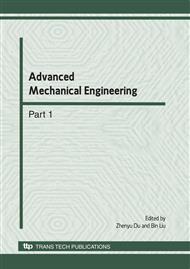p.25
p.32
p.36
p.43
p.48
p.55
p.60
p.67
p.71
Analysis of Characters of HSI Color Space and Its Application in Moving Robot
Abstract:
According to the analysis of every feature element’s grey images in RGB color space and HSI color space, each of the elements represents different information of the color image. From the analysis of the Histogram of color images, the value range of hue H basically keeps stable, which is proved by experiments to be the most stable and representative one. Finally we illustrated by application instances that the method of recognition and tracking of the objective moving robot based on hue character H is applicable.
Info:
Periodical:
Pages:
48-54
Citation:
Online since:
June 2010
Authors:
Price:
Сopyright:
© 2010 Trans Tech Publications Ltd. All Rights Reserved
Share:
Citation:


